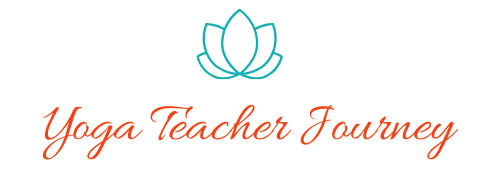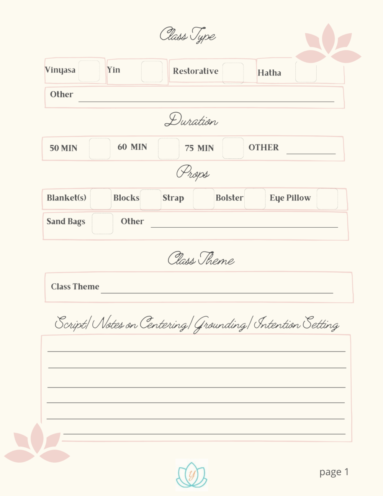Early in my 200-hour training, we were given an assignment to choose from three systems of energetics to explore and write about: the chakras, koshas, or vayus. At the time, I knew nothing about any of these systems and randomly chose the koshas. Little did I know that researching this topic would spark a desire for deeper understanding of this intriguing subtle body system of layers to our soul.
Fast forward two years later during my advanced teacher training. I learned so much more about this system and how it can deepen awareness and provide a path to our true selves. Finally, I had the confidence needed to share the koshas with my students and bring them greater awareness of their whole selves.
WHAT YOU NEED TO KNOW BEFORE TEACHING THE KOSHAS
The Panchamaya Kosha system comes from an ancient text called the Taittiriya Upanishad. Ayurvedic healing practices, known as yoga’s “sister science,” utilize the Panchamaya Kosha System as a roadmap to the origination and manifestation of dis-ease in the body.
Pancha means “five,” maya means “made of,” and kosha means “sheath” in Sanskrit. The koshas are sometimes described as layers of our being, sort of like the layers of an onion. Each layer, or sheath, can be peeled away to reveal the next layer, beginning with the most dense, physical body, to the subtlest form, the spiritual bliss body.
Another way to visualize this is that each subtle body nests inside the next, starting with the inner, most subtle form, to the outer most physical form of our body. Each of the subtle bodies are interconnected with one another.
The five koshas consist of the Annamaya Kosha (physical body), the Pranamaya Kosha (energetic/breath body), the Manomaya Kosha (mental/emotional body), the Vijnanamaya Kosha (intellectual body) and the Anandamaya Kosha (bliss body).
INTRODUCING THE KOSHAS TO YOUR STUDENTS
Prepare your students for this concept by presenting the koshas as a journey from their outermost physical self to their deepest innermost self.
The ancient yoga text, the Bhagavad Gita, teaches us that “Yoga is the journey of the self, through the self, to the self.”
Possible script: “Over the next few weeks, we will be journeying through the five koshas – kosha means “sheath” in Sanskrit – or layers of ourselves.”
Make it relatable by explaining that the koshas are part of the Panchamaya Kosha System originating in the ancient Vedic times and still used by yoga therapists today as a wholistic approach to healing.

Possible script: “We are so much more than just a physical being. We are multidimensional beings with each of our layers housing subtle energetic bodies embedded within the others.”
TEACH AS A SERIES OF CLASSES
Consider teaching the koshas as a series of classes. Your series can cover five classes, or you could combine some of the koshas in classes to shorten the series. This can be part of your regularly scheduled classes using the koshas as your theme, or you can plan and promote a separate series specifically for students to learn about the koshas.
THE JOURNEY
ANNAMAYA KOSHA – Physical Body
Possible script: “The outermost and physical body, the Annamaya Kosha, is the expression of ourselves which can be seen and felt. (“Anna” means food and maya means “made of.”) As we begin our practice and move into asanas (postures), Annamaya Kosha is the starting point of our experience.”
Cue students as they set their intention for their practice, to become aware of each movement they make, focusing on the sensations felt in their physical body, knowing that this outermost self, Annamaya Kosha, is not operating alone, but is part of an energetic system that is interrelated (allowing for the transfer of energy through pathways and channels – nadis) to support us throughout our human experience.
PRANAMAYA KOSHA – Breath Body
Possible script: “This week we continue our journey through the physical self to the next layer within – the Pranamaya Kosha – our energetic body. Prana means energy or “life force” in Sankrit. This kosha is facilitated by our breath and gives life to all our tissues and physical systems throughout our body.”
You may opt to cue students to bring their awareness to their breath. Remind them that although we spend a lot of our yoga practice focusing on breath control (pranayama), today perhaps become even more aware of how their breath assists them throughout their movements and aids in bringing them into the present moment. Where would we be without this energetic life force working together with all our other layers of our being?
Continue to cue students to inhale deeply and send their breath and awareness to places of tightness and tension in the body – knowing that “where your attention goes, energy flows.”
MANOMAYA & VIJNANAMAYA KOSHA – Exploring both the Mental Body & the Intellectual Body.
Possible script: This week we will explore both the Manomaya and Vijnanamaya Koshas. The Manomaya Kosha is related to our emotional brain – the way we process thoughts, our perceptions, the stories we tell ourselves. You may know this as mind chatter or chitta vritti. The Vijnanamaya Kosha is the intellectual body that has the ability to discern. The ability to separate truth from perception and the ability to connect with your true inner self.”
During the centering part of the practice, perhaps cue students to be the observer of their thoughts. To ask themselves what is true, what is real? To calm the mind chatter by knowing that they are the seer and have the ability to separate truth, perception, and samskaras (the patterns we have formed based on past experiences) and to connect to their own true nature.
During the practice, offer mantras to quietly repeat to themselves:
“I am the observer of my thoughts and feelings.”
“I am free from attachment and aversion.”
“I trust my inner guidance.”
ANANDAMAYA KOSHA – Bliss Body
Possible script: “We have arrived at the 5th kosha – Anandamaya. Ananda means “bliss” – the Bliss Body. This is the place within us where we experience our true Self. When we are connected to this kosha, we feel pure peace, joy, and contentment. You may have felt this bliss from time to time throughout your life when you have been lost in a joyful moment of a life experience and nothing else mattered except being in that moment. Some students experience this feeling during Savasana at the end of their yoga practice.”
Remind students, as they set their intention for their practice, to become aware of that place within them that connects them to their spirit. That peaceful, joyous place deep within their soul that is pure contentment, Santosha.
Consider offering the following mantras:
“Serenity and contentment are within me.”
“All I need is within me.”
“I am at peace.”
CULMINATE THE EXPERIENCE
Offering a culminating meditation of the five koshas will help students assimilate what they’ve learned over the length of your series. Yoga International provides a guided meditation Experience the Five Sheaths in the following article: The Koshas: Five Layers of Being.
Through our yoga practice we are able to integrate all five of our koshas: body, breath, mind, wisdom, and spirit. All work together to bring us into harmony, into the ultimate version of our true selves.
Further reading on the koshas:
Get to Know the Five Koshas – And Learn More About Yourself ~ Yoga Journal
The Five Koshas ~ Yogapedia
What are the Koshas ad What Can They Do for You? ~ Mind Body Green





